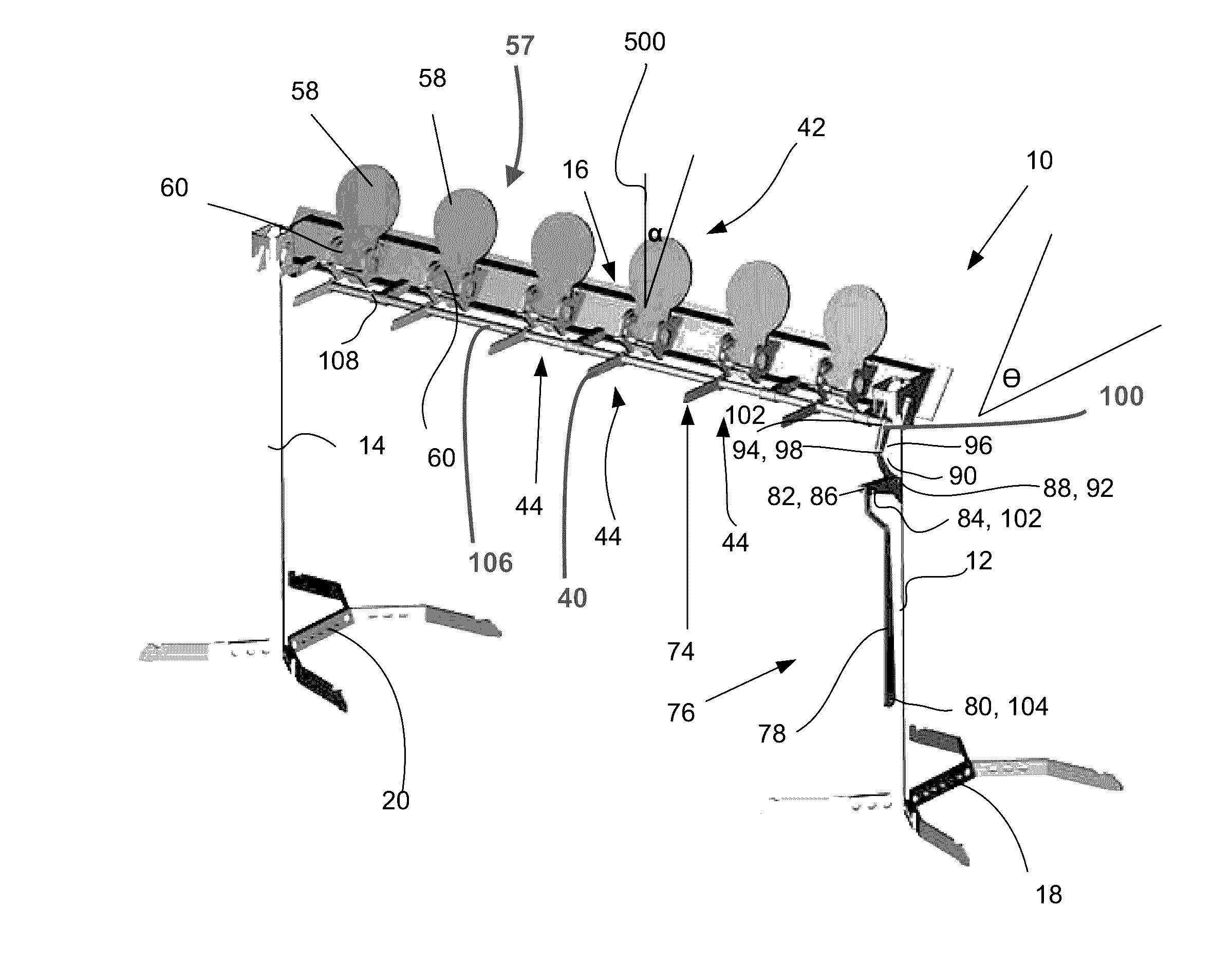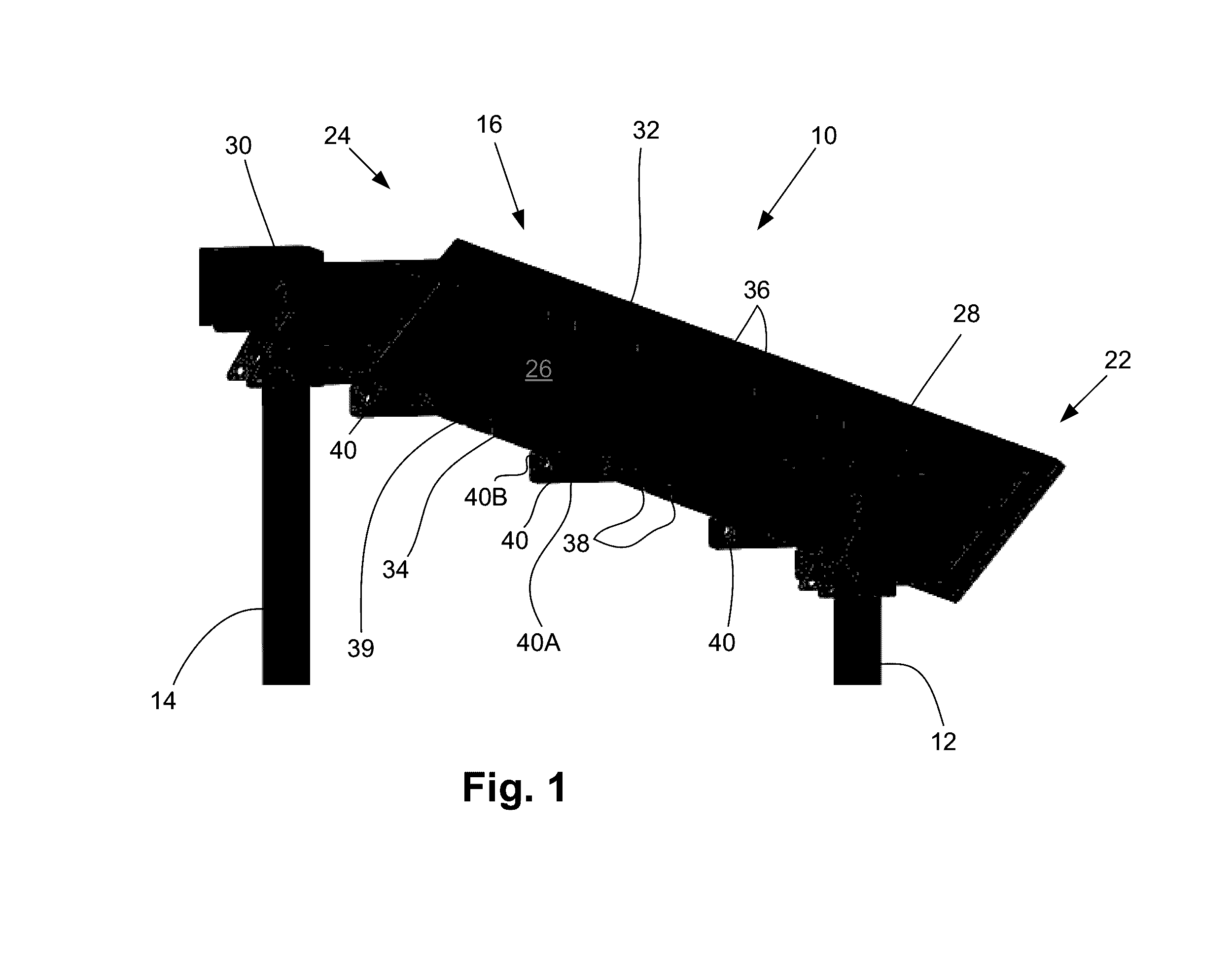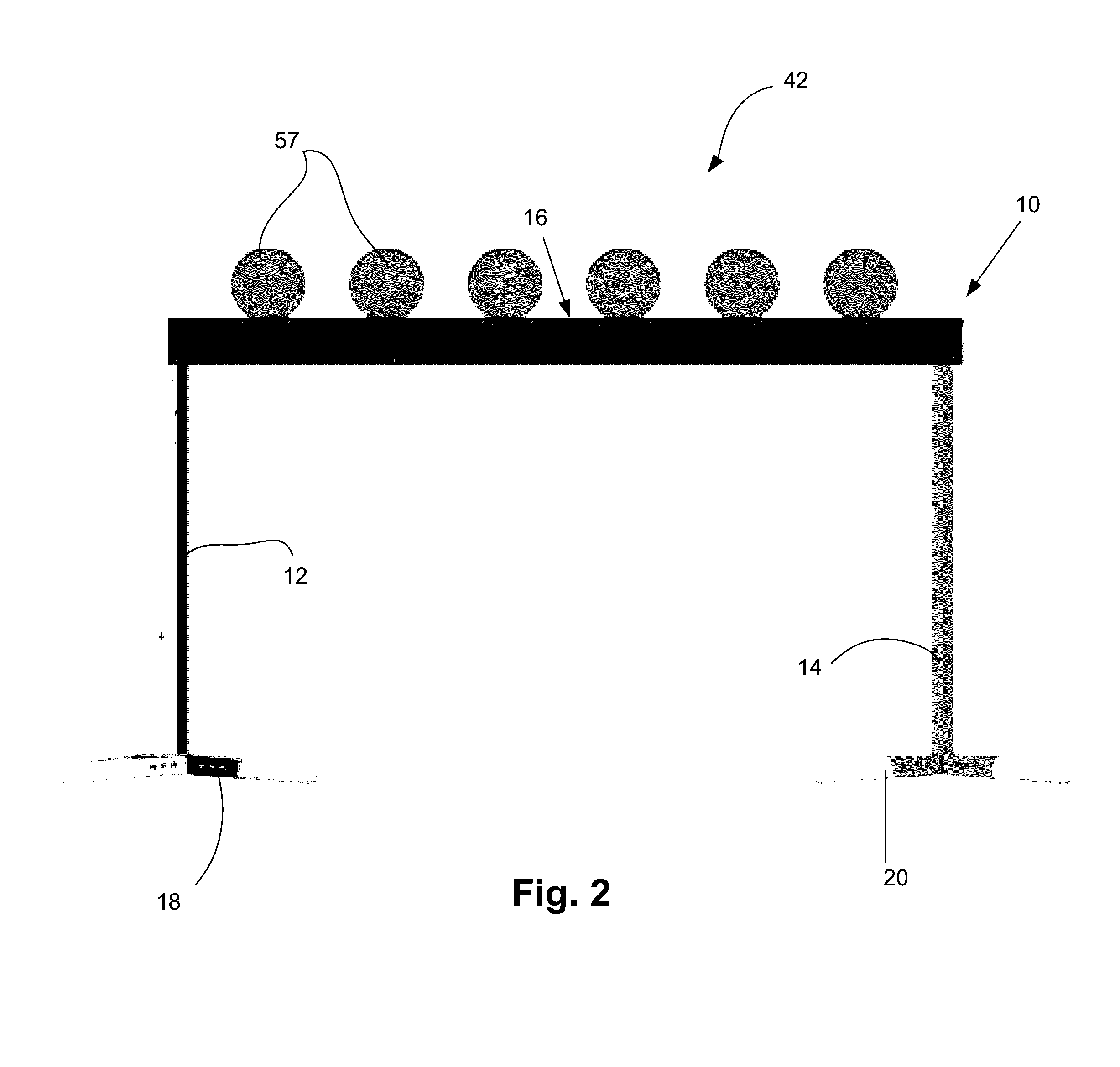Target attachment systems, main frame for receiving different target attachment systems and methods of using the same
- Summary
- Abstract
- Description
- Claims
- Application Information
AI Technical Summary
Benefits of technology
Problems solved by technology
Method used
Image
Examples
Embodiment Construction
[0049]In embodiments, there are disclosed main frames capable of receiving a plurality of target attachment systems, target attachment systems, target systems comprising a main frame and a target attachment system, and methods of using the same.
[0050]Referring now to the drawings, and more particularly to FIG. 1, there is shown a main frame 10 that can be used for a plurality of different target attachment systems (as it will be described below).
[0051]The main frame 10 includes a first (rightmost) elongated post 12 and a second (leftmost) elongated post 14, which is distant from the first elongated posts 12. The main frame 10 further includes an elongated target receiving member 16 which is supported by the first and second elongated posts 12, 14. Referring to FIGS. 1 and 2, there is shown that the main frame 10 further includes a first base (rightmost) member 18 which has the role of supporting the first elongated posts 12 and a second (leftmost) base member 20 which has the role o...
PUM
 Login to View More
Login to View More Abstract
Description
Claims
Application Information
 Login to View More
Login to View More - R&D
- Intellectual Property
- Life Sciences
- Materials
- Tech Scout
- Unparalleled Data Quality
- Higher Quality Content
- 60% Fewer Hallucinations
Browse by: Latest US Patents, China's latest patents, Technical Efficacy Thesaurus, Application Domain, Technology Topic, Popular Technical Reports.
© 2025 PatSnap. All rights reserved.Legal|Privacy policy|Modern Slavery Act Transparency Statement|Sitemap|About US| Contact US: help@patsnap.com



